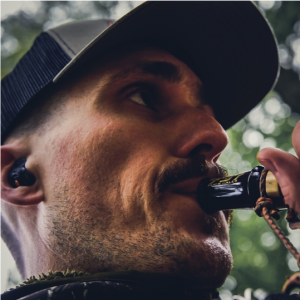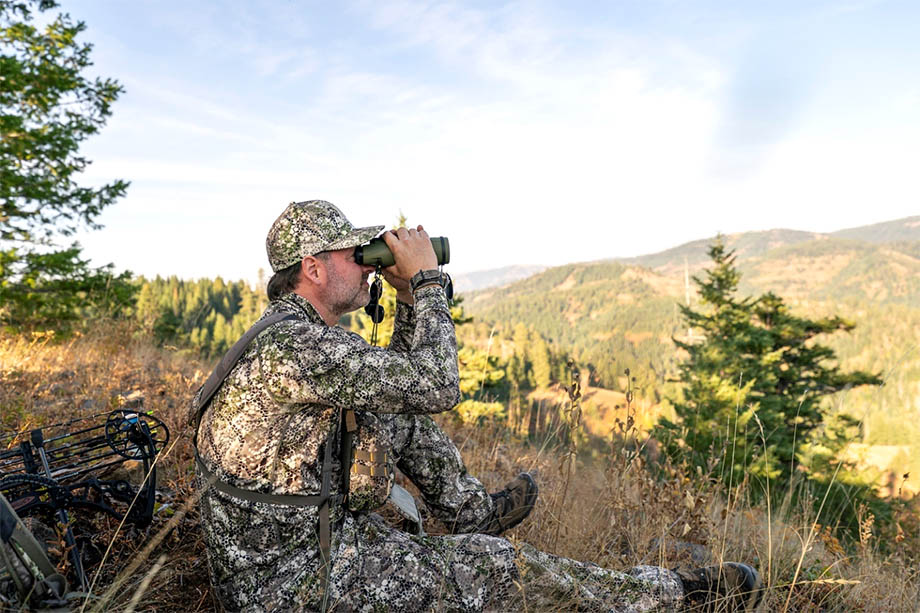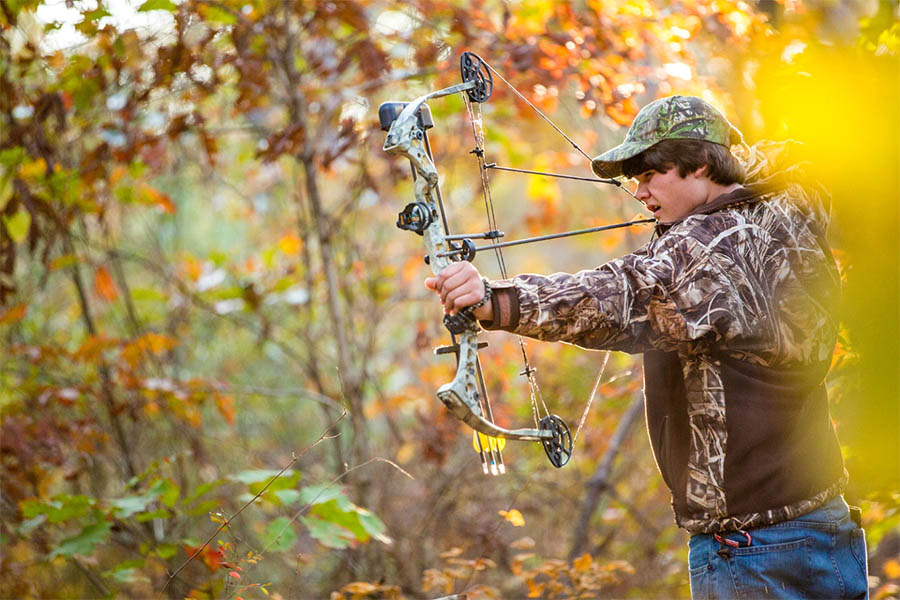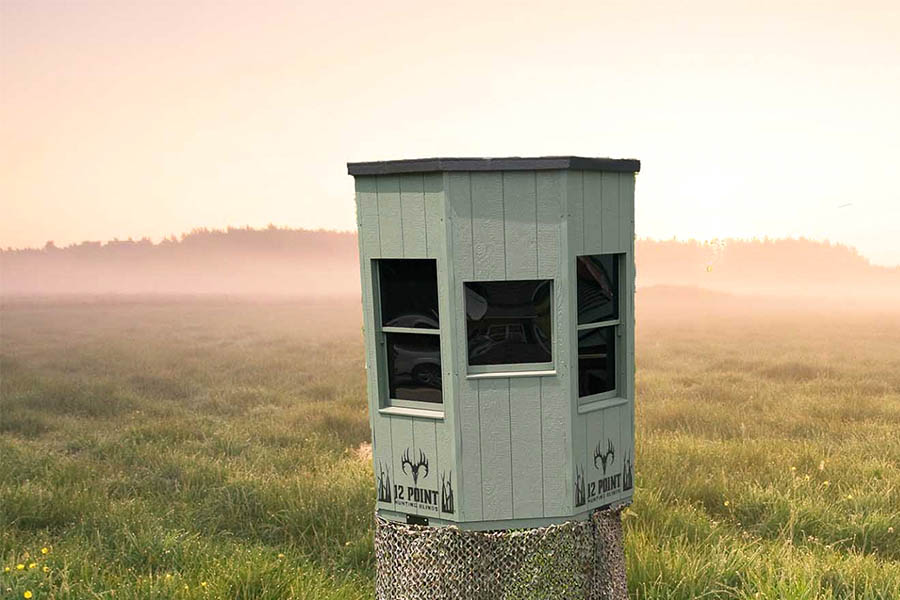3 Tips for Early Season Goose Hunting
I’m not your typical Midwestern boy. As soon as September rolls around you won’t find me thinking about sitting in a tree stand waiting to harvest a big buck with my favorite bow. Instead, I find myself daydreaming about farm ponds, hay fields, and the first opportunity of the season to share a blind with my hunting buddies. For me, September is all about hunting early-season resident Canada geese.
Despite what one may think, early-season birds can be just as tough to hunt as late-season migrators from Manitoba. Fair weather is one of the biggest obstacles to hunting these birds, as warm temperatures can lead to an entire day spent in the blind without so much as even hearing a lone honk off in the distance. Add to that the fact that you and your buddies are still rusty from last season and any tip or trick can be a godsend. So here are my 3 goose hunting tips to help you be more successful during early season for Canadian goose hunting.
How to Bag Early Season Geese During Goose Hunting Season

Call Less
Besides the dog work, I think it’s fair to say that most waterfowlers’ favorite part about hunting ducks and geese is the calling. The sport is one that is tailored to gear junkies. Hardcore waterfowlers have multiple calls for the same species hanging on their lanyards. They have painstakingly practiced on these calls and have used them so many times over the years to the point that they may only use each call in very specific situations. All of that is great and I’m not about to argue that you should leave your calls at home, but early-season birds are not the birds to use fancy cadences on.
If you want to be more successful in the early goose hunting season, call less. The birds that you will be hunting are residents and as such feel extremely safe in their surroundings. So while it might be cool to get a bird to commit after hitting him with a spit note from 50 yards out, the truth is that he was already planning on landing before you even made a noise. So keep your calling to a minimum and keep it basic.
Focus your calling on clean and precise clucks and moans or a combination of the two. You should also consider limiting the number of callers in the blind as the early season revolves around hunting smaller groups of birds. Too many callers can make incoming birds feel uneasy and may cause them to avert from their original destination. Make a game plan with your buddies beforehand, so that everyone knows who is allowed to call and when.
Choose the Best Goose Hunting Blind

Hide. Hide. Hide.
Even though they have yet to experience any kind of hunting pressure, resident birds can still provide a challenge to hunters. This is mainly due to the fact that these birds know every bend, dip, and crater on every property in the county. They have been hanging out at the same locations for months, so if you don’t get your hide right, you may walk away with a big ol’ goose egg (excuse the pun).
To hide your blind effectively use as much onsite, natural, green vegetation as possible. That last point is crucial if you are looking to limit out on honkers in September. If your hide shares the same color as your favorite light beer, chances are the birds will have you pegged before they even contemplate putting their landing gear down. Your hide needs to be as realistic as possible, so don’t overlook small details like the age of the stubble you will be using.
When setting up your goose hunting blind, try not to make it any larger either horizontally or vertically than necessary. If someone parked a semi-truck across the street from your house, you would probably notice it straight away, but if they did the same with a little Prius, it would be less likely to grab your attention. It is for this reason that having a blind with a smaller footprint can be more beneficial to you early in the year. To make sure your blind isn’t too large, go out and look at your blind from a distance. If it looks obvious to you, it’s safe to say that the birds will feel the same way.
Goose Hunting Decoys – Less is More
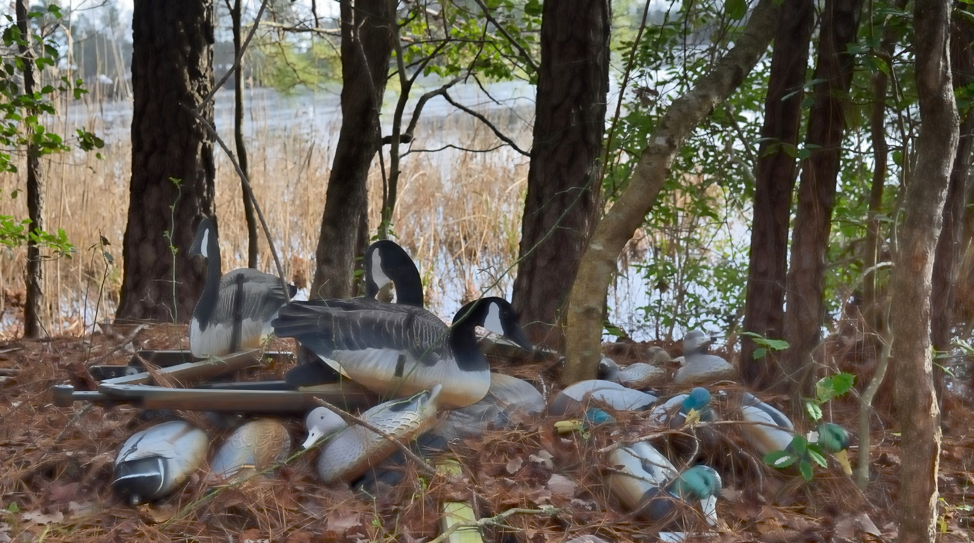
Don’t Overload the Spread
I’m as guilty as the next guy when it comes to having way too many decoys for my own good. I’m constantly scouring Marketplace and Craigslist to see if I can happen across someone trying to pawn off a dozen decoys that I really don’t need. Having a healthy number of decoys is great for hunting cornfields in January, but for September hay fields, less is more.
First off, resident birds tend to arrive in smaller, more spaced-out waves throughout the morning and afternoon. Loading the pond with too many decoys can set off alarm bells for that first group of birds, as they are used to being the first ones at the party. The general rule of thumb that I live by is to use no more than half the number of birds that you have seen while out scouting. This number should give you enough visual presence from above without appearing suspicious.
Secondly, you need to consider the differences in how birds interact in the early season versus later in the year. Early-season birds tend to still be hanging out in smaller family groups, unlike their migrating late-season counterparts. When setting up your spread, bunch your decoys into small clusters with between 5 to 20 birds per group. Pay particular attention to leaving space (at least 10-30 yards) between these groups to help convey the realism of the presence of different families.
Recap
Early goose season is one of the best times of the year to get out and experience good waterfowl hunting without freezing your tail off. The birds are naive and untested and the bag limits are high. This doesn’t mean that every hunt is going to be a home run though. But if you limit your calling to the basics, focus on blending your hide into its surroundings, and set up your decoys in realistic family groups, you will have a better chance of knocking one out of the park and creating another hunt that will be talked about around the campfire for years to come.
Shop for Hunting Blinds Online – CLICK HERE

